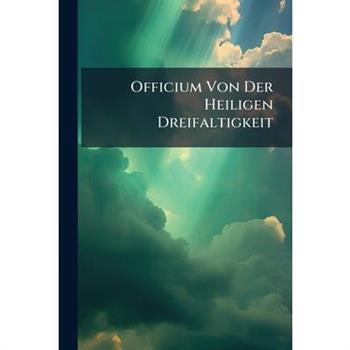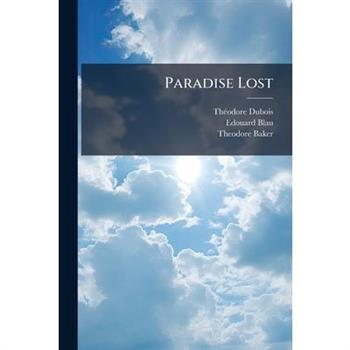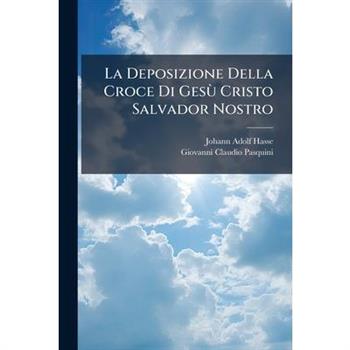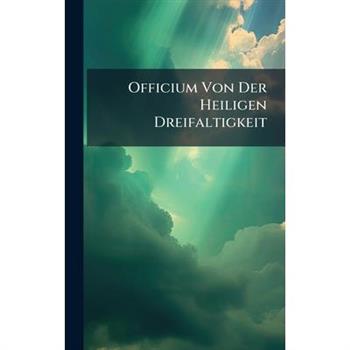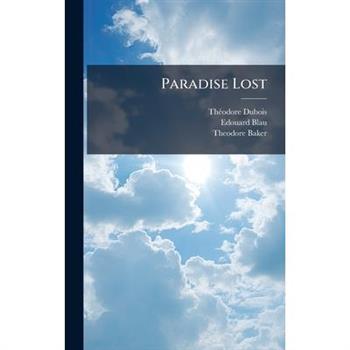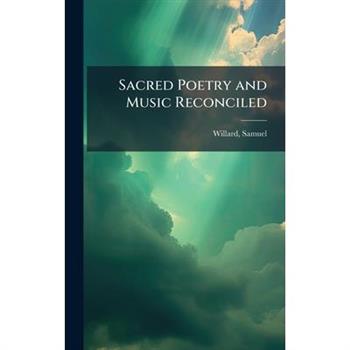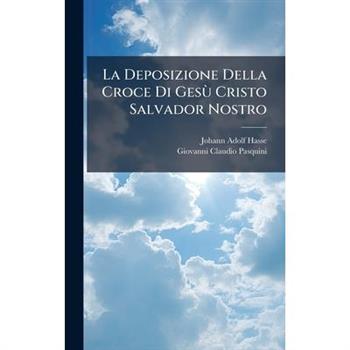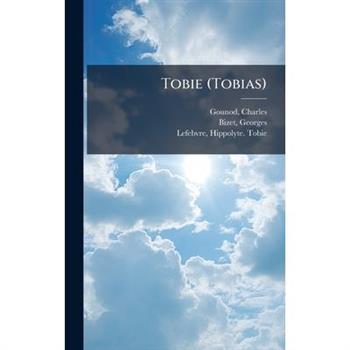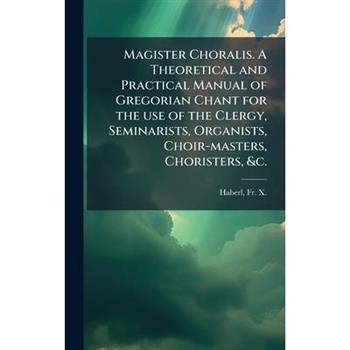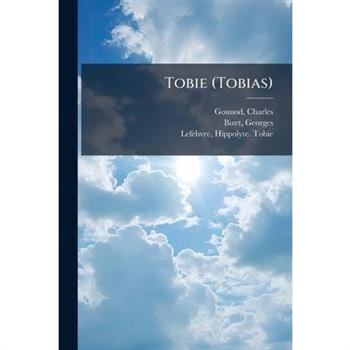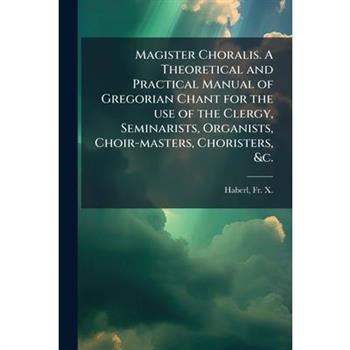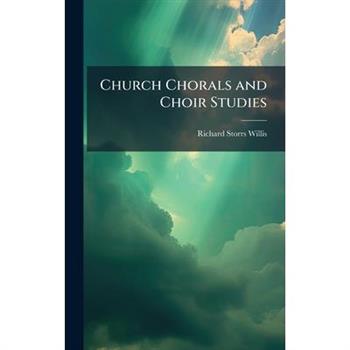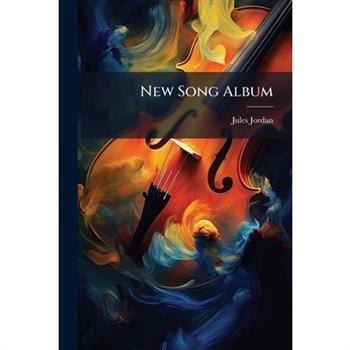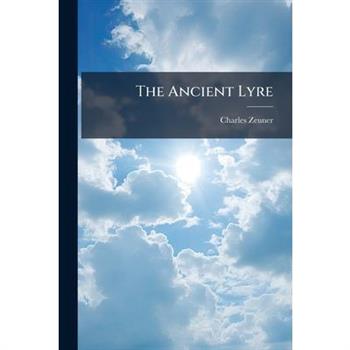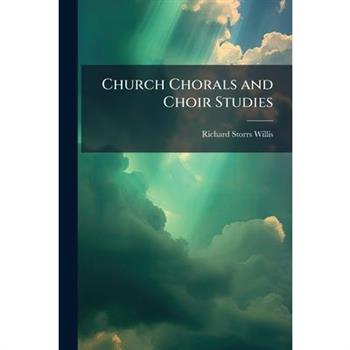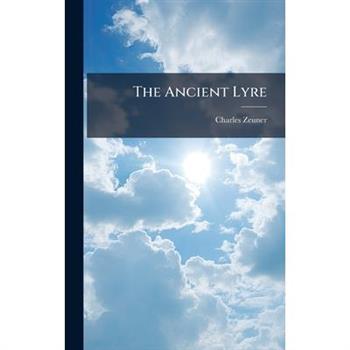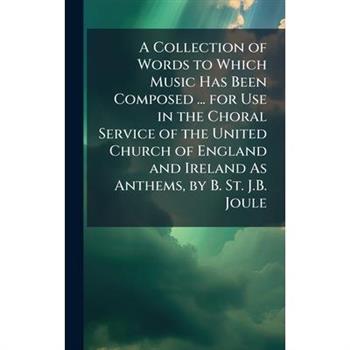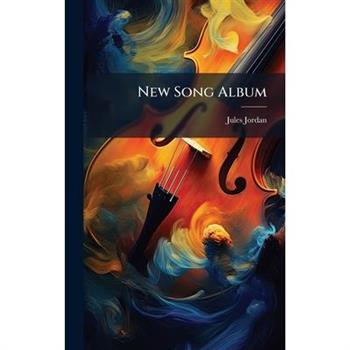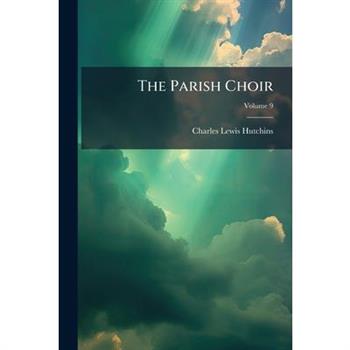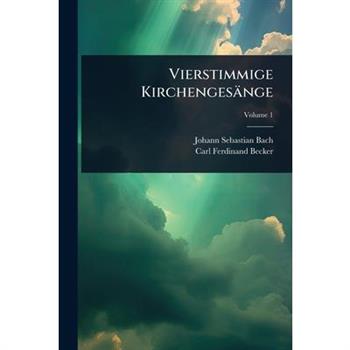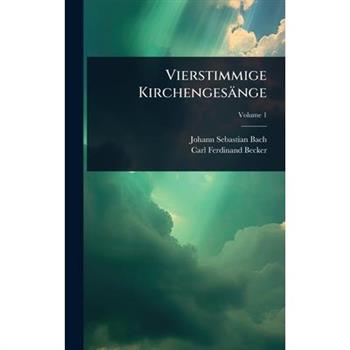Temple Anthems For General Use By All Church Choirs
Church Sound System Handbook
A helpful guide for upgrading and maintaining a basic affordable church sound system.
How Moses Discovered God's Envy
Do you know that Abraham's error while he was dealing with God was the reason his descendants had to slave in Egypt for over four centuries?Do you know that Moses as well couldn't access the Promised Land for this same error?And do you know that majority of us are still committing this same error, making our lives as well become unnecessarily difficult; and also making all the sweat of men who penned the Bible seem wasted?Grab a copy of this book to find out what I'm talking about, unraveling rare ideas regarding how you should deal with God to have a good relationship with Him, and living a happier life.
A Selection Of Carols, Pieces, And Anthems, Suitable For Christmas
Immerse yourself in the timeless spirit of Christmas with "A Selection Of Carols, Pieces, And Anthems, Suitable For Christmas." This carefully curated collection brings together a harmonious blend of traditional carols, evocative musical pieces, and uplifting anthems, perfect for celebrating the festive season.Whether you're a choir director seeking inspiring repertoire, a musician looking to enrich your holiday performances, or simply someone who cherishes the beauty of Christmas music, this selection offers something for everyone. Rediscover the joy and reverence of the season through these enduring compositions, designed to resonate with audiences of all ages. Let the enchanting melodies and profound lyrics fill your heart with the warmth and wonder of Christmas.This work has been selected by scholars as being culturally important, and is part of the knowledge base of civilization as we know it. This work was reproduced from the original artifact, and remains as true to the original work as possible. Therefore, you will see the original copyright references, library stamps (as most of these works have been housed in our most important libraries around the world), and other notations in the work.This work is in the public domain in the United States of America, and possibly other nations. Within the United States, you may freely copy and distribute this work, as no entity (individual or corporate) has a copyright on the body of the work.As a reproduction of a historical artifact, this work may contain missing or blurred pages, poor pictures, errant marks, etc. Scholars believe, and we concur, that this work is important enough to be preserved, reproduced, and made generally available to the public. We appreciate your support of the preservation process, and thank you for being an important part of keeping this knowledge alive and relevant.
Temple Anthems For General Use By All Church Choirs
Temple Anthems for General Use By All Church Choirs, Volume 2 is a collection of anthems suitable for performance by church choirs. This volume presents a variety of musical selections intended to enrich worship services and provide opportunities for choral groups to showcase their talent. The anthems cover a range of themes and musical styles, offering something for various occasions and preferences within the church year. Compiled for practical use, this collection provides accessible arrangements that allow choirs of varying skill levels to participate and contribute to the musical life of their congregations. The enduring appeal of these anthems lies in their ability to convey spiritual messages through the power of music, fostering a deeper connection between the choir, the congregation, and the divine. This volume stands as a testament to the timeless tradition of sacred choral music and its role in enhancing religious experience.This work has been selected by scholars as being culturally important, and is part of the knowledge base of civilization as we know it. This work was reproduced from the original artifact, and remains as true to the original work as possible. Therefore, you will see the original copyright references, library stamps (as most of these works have been housed in our most important libraries around the world), and other notations in the work.This work is in the public domain in the United States of America, and possibly other nations. Within the United States, you may freely copy and distribute this work, as no entity (individual or corporate) has a copyright on the body of the work.As a reproduction of a historical artifact, this work may contain missing or blurred pages, poor pictures, errant marks, etc. Scholars believe, and we concur, that this work is important enough to be preserved, reproduced, and made generally available to the public. We appreciate your support of the preservation process, and thank you for being an important part of keeping this knowledge alive and relevant.
Jewish Bard
Discover the lyrical world of Eliakum Zunser, a celebrated figure in Jewish culture, in "Jewish Bard." This collection showcases Zunser's poignant poetry and songs, reflecting the joys and struggles of Jewish life in Eastern Europe. A master of Yiddish verse, Zunser captured the hearts of his community with his heartfelt melodies and insightful observations. "Jewish Bard" offers a window into a rich cultural heritage, preserving Zunser's legacy for future generations. Experience the beauty and depth of his work, a testament to the enduring power of music and poetry in the face of adversity. Explore themes of faith, resilience, and hope through the timeless verses of the Jewish Bard.This work has been selected by scholars as being culturally important, and is part of the knowledge base of civilization as we know it. This work was reproduced from the original artifact, and remains as true to the original work as possible. Therefore, you will see the original copyright references, library stamps (as most of these works have been housed in our most important libraries around the world), and other notations in the work.This work is in the public domain in the United States of America, and possibly other nations. Within the United States, you may freely copy and distribute this work, as no entity (individual or corporate) has a copyright on the body of the work.As a reproduction of a historical artifact, this work may contain missing or blurred pages, poor pictures, errant marks, etc. Scholars believe, and we concur, that this work is important enough to be preserved, reproduced, and made generally available to the public. We appreciate your support of the preservation process, and thank you for being an important part of keeping this knowledge alive and relevant.
Preludes, Offertories and Postludes, for the Organ
This collection, "Preludes, Offertories and Postludes, for the Organ," presents a selection of compositions by Harry Rowe Shelley (1858-1947), a renowned American composer and organist. The pieces are ideally suited for church services and recitals, providing a rich and varied repertoire for organists. Shelley's compositions reflect a deep understanding of the organ's capabilities, blending technical skill with melodic beauty. This volume offers a valuable resource for both experienced performers and students seeking to expand their knowledge of organ literature. The preludes, offertories, and postludes included are crafted to enhance the worship experience, adding a touch of elegance and spirituality to any service.This work has been selected by scholars as being culturally important, and is part of the knowledge base of civilization as we know it. This work was reproduced from the original artifact, and remains as true to the original work as possible. Therefore, you will see the original copyright references, library stamps (as most of these works have been housed in our most important libraries around the world), and other notations in the work.This work is in the public domain in the United States of America, and possibly other nations. Within the United States, you may freely copy and distribute this work, as no entity (individual or corporate) has a copyright on the body of the work.As a reproduction of a historical artifact, this work may contain missing or blurred pages, poor pictures, errant marks, etc. Scholars believe, and we concur, that this work is important enough to be preserved, reproduced, and made generally available to the public. We appreciate your support of the preservation process, and thank you for being an important part of keeping this knowledge alive and relevant.
A Selection Of Carols, Pieces, And Anthems, Suitable For Christmas
Immerse yourself in the timeless spirit of Christmas with "A Selection Of Carols, Pieces, And Anthems, Suitable For Christmas." This carefully curated collection brings together a harmonious blend of traditional carols, evocative musical pieces, and uplifting anthems, perfect for celebrating the festive season.Whether you're a choir director seeking inspiring repertoire, a musician looking to enrich your holiday performances, or simply someone who cherishes the beauty of Christmas music, this selection offers something for everyone. Rediscover the joy and reverence of the season through these enduring compositions, designed to resonate with audiences of all ages. Let the enchanting melodies and profound lyrics fill your heart with the warmth and wonder of Christmas.This work has been selected by scholars as being culturally important, and is part of the knowledge base of civilization as we know it. This work was reproduced from the original artifact, and remains as true to the original work as possible. Therefore, you will see the original copyright references, library stamps (as most of these works have been housed in our most important libraries around the world), and other notations in the work.This work is in the public domain in the United States of America, and possibly other nations. Within the United States, you may freely copy and distribute this work, as no entity (individual or corporate) has a copyright on the body of the work.As a reproduction of a historical artifact, this work may contain missing or blurred pages, poor pictures, errant marks, etc. Scholars believe, and we concur, that this work is important enough to be preserved, reproduced, and made generally available to the public. We appreciate your support of the preservation process, and thank you for being an important part of keeping this knowledge alive and relevant.
The Tempo Implications of Bach's Notation
This research into the tempos of Bach's dance music answers the age-old question, "How fast should this piece be?" Because Bach's tempo often differs from current performance practice, this research transforms our understanding of his music.Bach's sacred music makes up more than three-fourths of his extant work. It includes the Magnificat; passions according to Saints Matthew and John; oratorios for Christmas, Easter, and Ascension; the Mass in B Minor and four short masses; five independent settings of the Sanctus; six motets; and 212 cantatas. Over 2,000 movements survive, including chorales, recitatives, and accompanied movements for from one to five voices. Bach frequently designates the vocal forces required by words such as "Aria," "Duetto," "Terzetto," and "Chorus," words that clearly have no effect on tempo. The author's previously-published book The Proportional Method is sufficient to determine tempo for such movements. However, the designations "Chorale" and "Recitative" do convey information regarding tempo. In this volume, the author presents evidence that, contrary to current performance practice, Bach's "Recitatives" are performed to a steady beat. He also demonstrates how to use the proportional method to determine the tempos for all of Bach's chorales and recitatives.After perusing this book, the musician will be able to determine Bach's intended tempo for any Bach sacred movement. He needs only to identify the designation, time signature, tactus speed, and shortest note value. By establishing Bach's intended tempos, the musician will also discover Bach's intended musical effects.This book is for classical musicians, musicologists, church choral directors, church historians, music students, and anyone who appreciates Bach's music. Thoroughly researched and meticulously documented, it includes 35 musical examples and dozens of figures and tables. It includes a bibliography, and it also includes an index of cited Bach works, sorted by BWV number. This research is presented so that an amateur musician will be able to follow the arguments.
The Boston Handel and Haydn Society Collection of Church Music; Being a Selection of the Most Approved Psalm and Hymn Tunes, Anthems, Sentences, Chants, &c. Together With Extracts From the Works of Ha
"The Boston Handel and Haydn Society Collection of Church Music" is a significant historical compilation, reflecting the musical tastes and practices of early 19th-century American church choirs. Edited by Lowell Mason, a prominent figure in American church music, this collection assembles a diverse range of musical works, including psalm and hymn tunes, anthems, sentences, and chants. It also features extracts from renowned European composers like Haydn, Mozart, and Beethoven, demonstrating the influence of European musical traditions on American sacred music. This volume offers valuable insights into the repertoire and performance practices of the Handel and Haydn Society, one of America's oldest and most influential musical organizations. It serves as a resource for understanding the development of American church music and the cultural exchange between Europe and the United States in the early 19th century. For music historians, church musicians, and those interested in American cultural history, this collection provides a window into the musical landscape of a formative period.This work has been selected by scholars as being culturally important, and is part of the knowledge base of civilization as we know it. This work was reproduced from the original artifact, and remains as true to the original work as possible. Therefore, you will see the original copyright references, library stamps (as most of these works have been housed in our most important libraries around the world), and other notations in the work.This work is in the public domain in the United States of America, and possibly other nations. Within the United States, you may freely copy and distribute this work, as no entity (individual or corporate) has a copyright on the body of the work.As a reproduction of a historical artifact, this work may contain missing or blurred pages, poor pictures, errant marks, etc. Scholars believe, and we concur, that this work is important enough to be preserved, reproduced, and made generally available to the public. We appreciate your support of the preservation process, and thank you for being an important part of keeping this knowledge alive and relevant.
Preludes, Offertories and Postludes, for the Organ
This collection, "Preludes, Offertories and Postludes, for the Organ," presents a selection of compositions by Harry Rowe Shelley (1858-1947), a renowned American composer and organist. The pieces are ideally suited for church services and recitals, providing a rich and varied repertoire for organists. Shelley's compositions reflect a deep understanding of the organ's capabilities, blending technical skill with melodic beauty. This volume offers a valuable resource for both experienced performers and students seeking to expand their knowledge of organ literature. The preludes, offertories, and postludes included are crafted to enhance the worship experience, adding a touch of elegance and spirituality to any service.This work has been selected by scholars as being culturally important, and is part of the knowledge base of civilization as we know it. This work was reproduced from the original artifact, and remains as true to the original work as possible. Therefore, you will see the original copyright references, library stamps (as most of these works have been housed in our most important libraries around the world), and other notations in the work.This work is in the public domain in the United States of America, and possibly other nations. Within the United States, you may freely copy and distribute this work, as no entity (individual or corporate) has a copyright on the body of the work.As a reproduction of a historical artifact, this work may contain missing or blurred pages, poor pictures, errant marks, etc. Scholars believe, and we concur, that this work is important enough to be preserved, reproduced, and made generally available to the public. We appreciate your support of the preservation process, and thank you for being an important part of keeping this knowledge alive and relevant.
Sacred Poetry and Music Reconciled
"Sacred Poetry and Music Reconciled" is a collection of hymns, both original and compiled, designed to create a harmonious connection between poetic expression and musical emphasis. This volume, intended for use in religious settings, seeks to ensure an invariable coincidence between the poetic and musical elements, enhancing the worship experience. The collection includes a variety of hymns suitable for different occasions and moods, reflecting the theological and spiritual sentiments of the era. With its focus on simplicity and practicality, this work aims to make sacred music accessible and meaningful for congregations. "Sacred Poetry and Music Reconciled" offers a glimpse into the religious practices and artistic sensibilities of the early 19th century.This work has been selected by scholars as being culturally important, and is part of the knowledge base of civilization as we know it. This work was reproduced from the original artifact, and remains as true to the original work as possible. Therefore, you will see the original copyright references, library stamps (as most of these works have been housed in our most important libraries around the world), and other notations in the work.This work is in the public domain in the United States of America, and possibly other nations. Within the United States, you may freely copy and distribute this work, as no entity (individual or corporate) has a copyright on the body of the work.As a reproduction of a historical artifact, this work may contain missing or blurred pages, poor pictures, errant marks, etc. Scholars believe, and we concur, that this work is important enough to be preserved, reproduced, and made generally available to the public. We appreciate your support of the preservation process, and thank you for being an important part of keeping this knowledge alive and relevant.
The Boston Handel and Haydn Society Collection of Church Music; Being a Selection of the Most Approved Psalm and Hymn Tunes, Anthems, Sentences, Chants, &c. Together With Extracts From the Works of Ha
"The Boston Handel and Haydn Society Collection of Church Music" is a significant historical compilation, reflecting the musical tastes and practices of early 19th-century American church choirs. Edited by Lowell Mason, a prominent figure in American church music, this collection assembles a diverse range of musical works, including psalm and hymn tunes, anthems, sentences, and chants. It also features extracts from renowned European composers like Haydn, Mozart, and Beethoven, demonstrating the influence of European musical traditions on American sacred music. This volume offers valuable insights into the repertoire and performance practices of the Handel and Haydn Society, one of America's oldest and most influential musical organizations. It serves as a resource for understanding the development of American church music and the cultural exchange between Europe and the United States in the early 19th century. For music historians, church musicians, and those interested in American cultural history, this collection provides a window into the musical landscape of a formative period.This work has been selected by scholars as being culturally important, and is part of the knowledge base of civilization as we know it. This work was reproduced from the original artifact, and remains as true to the original work as possible. Therefore, you will see the original copyright references, library stamps (as most of these works have been housed in our most important libraries around the world), and other notations in the work.This work is in the public domain in the United States of America, and possibly other nations. Within the United States, you may freely copy and distribute this work, as no entity (individual or corporate) has a copyright on the body of the work.As a reproduction of a historical artifact, this work may contain missing or blurred pages, poor pictures, errant marks, etc. Scholars believe, and we concur, that this work is important enough to be preserved, reproduced, and made generally available to the public. We appreciate your support of the preservation process, and thank you for being an important part of keeping this knowledge alive and relevant.
Deseret Sunday School Union Music Book
"Deseret Sunday School Union Music Book" is a historical collection of musical pieces intended for use in Sunday Schools. Compiled by the Deseret Sunday School Union, this book offers a selection of Christian hymns and songs suitable for religious instruction and worship. It provides valuable insight into the musical practices within the Mormon community and their approach to religious education during the period it was published. This volume preserves a unique aspect of religious life and musical heritage, making it a significant resource for researchers, historians, and anyone interested in the history of religious music and the Mormon faith.This work has been selected by scholars as being culturally important, and is part of the knowledge base of civilization as we know it. This work was reproduced from the original artifact, and remains as true to the original work as possible. Therefore, you will see the original copyright references, library stamps (as most of these works have been housed in our most important libraries around the world), and other notations in the work.This work is in the public domain in the United States of America, and possibly other nations. Within the United States, you may freely copy and distribute this work, as no entity (individual or corporate) has a copyright on the body of the work.As a reproduction of a historical artifact, this work may contain missing or blurred pages, poor pictures, errant marks, etc. Scholars believe, and we concur, that this work is important enough to be preserved, reproduced, and made generally available to the public. We appreciate your support of the preservation process, and thank you for being an important part of keeping this knowledge alive and relevant.
Jewish Bard
Discover the lyrical world of Eliakum Zunser, a celebrated figure in Jewish culture, in "Jewish Bard." This collection showcases Zunser's poignant poetry and songs, reflecting the joys and struggles of Jewish life in Eastern Europe. A master of Yiddish verse, Zunser captured the hearts of his community with his heartfelt melodies and insightful observations. "Jewish Bard" offers a window into a rich cultural heritage, preserving Zunser's legacy for future generations. Experience the beauty and depth of his work, a testament to the enduring power of music and poetry in the face of adversity. Explore themes of faith, resilience, and hope through the timeless verses of the Jewish Bard.This work has been selected by scholars as being culturally important, and is part of the knowledge base of civilization as we know it. This work was reproduced from the original artifact, and remains as true to the original work as possible. Therefore, you will see the original copyright references, library stamps (as most of these works have been housed in our most important libraries around the world), and other notations in the work.This work is in the public domain in the United States of America, and possibly other nations. Within the United States, you may freely copy and distribute this work, as no entity (individual or corporate) has a copyright on the body of the work.As a reproduction of a historical artifact, this work may contain missing or blurred pages, poor pictures, errant marks, etc. Scholars believe, and we concur, that this work is important enough to be preserved, reproduced, and made generally available to the public. We appreciate your support of the preservation process, and thank you for being an important part of keeping this knowledge alive and relevant.
Gesangbuch Zum Gebrauche Der Wirtembergischen Katholischen Hofkapelle
"Gesangbuch Zum Gebrauche Der Wirtembergischen Katholischen Hofkapelle" is a historical hymnal originally intended for use in the Catholic court chapel of Wurttemberg. This collection offers a glimpse into the liturgical music and religious practices of the time. Although the author is anonymous, the hymnal provides valuable insight into the musical and theological traditions of the Wurttemberg region. This book preserves a significant part of Christian musical heritage.This work has been selected by scholars as being culturally important, and is part of the knowledge base of civilization as we know it. This work was reproduced from the original artifact, and remains as true to the original work as possible. Therefore, you will see the original copyright references, library stamps (as most of these works have been housed in our most important libraries around the world), and other notations in the work.This work is in the public domain in the United States of America, and possibly other nations. Within the United States, you may freely copy and distribute this work, as no entity (individual or corporate) has a copyright on the body of the work.As a reproduction of a historical artifact, this work may contain missing or blurred pages, poor pictures, errant marks, etc. Scholars believe, and we concur, that this work is important enough to be preserved, reproduced, and made generally available to the public. We appreciate your support of the preservation process, and thank you for being an important part of keeping this knowledge alive and relevant.
Chant-Book
This is a selection of psalms and other portions of Holy Scripture, arranged for chanting by W. Shelmerdine. Originally published in 1843, "Chant-Book" provides a fascinating glimpse into 19th-century Christian liturgical music. The arrangements are intended to facilitate congregational singing and enhance devotional experience.The book offers carefully chosen verses and refrains set to simple, accessible melodies suitable for both trained choirs and amateur singers. "Chant-Book" is a valuable resource for those interested in the history of Christian worship music, the use of psalms in religious practice, and the musical traditions of the Victorian era. It provides a snapshot into the musical tastes and religious practices of the time.This work has been selected by scholars as being culturally important, and is part of the knowledge base of civilization as we know it. This work was reproduced from the original artifact, and remains as true to the original work as possible. Therefore, you will see the original copyright references, library stamps (as most of these works have been housed in our most important libraries around the world), and other notations in the work.This work is in the public domain in the United States of America, and possibly other nations. Within the United States, you may freely copy and distribute this work, as no entity (individual or corporate) has a copyright on the body of the work.As a reproduction of a historical artifact, this work may contain missing or blurred pages, poor pictures, errant marks, etc. Scholars believe, and we concur, that this work is important enough to be preserved, reproduced, and made generally available to the public. We appreciate your support of the preservation process, and thank you for being an important part of keeping this knowledge alive and relevant.
Chant-Book
This is a selection of psalms and other portions of Holy Scripture, arranged for chanting by W. Shelmerdine. Originally published in 1843, "Chant-Book" provides a fascinating glimpse into 19th-century Christian liturgical music. The arrangements are intended to facilitate congregational singing and enhance devotional experience.The book offers carefully chosen verses and refrains set to simple, accessible melodies suitable for both trained choirs and amateur singers. "Chant-Book" is a valuable resource for those interested in the history of Christian worship music, the use of psalms in religious practice, and the musical traditions of the Victorian era. It provides a snapshot into the musical tastes and religious practices of the time.This work has been selected by scholars as being culturally important, and is part of the knowledge base of civilization as we know it. This work was reproduced from the original artifact, and remains as true to the original work as possible. Therefore, you will see the original copyright references, library stamps (as most of these works have been housed in our most important libraries around the world), and other notations in the work.This work is in the public domain in the United States of America, and possibly other nations. Within the United States, you may freely copy and distribute this work, as no entity (individual or corporate) has a copyright on the body of the work.As a reproduction of a historical artifact, this work may contain missing or blurred pages, poor pictures, errant marks, etc. Scholars believe, and we concur, that this work is important enough to be preserved, reproduced, and made generally available to the public. We appreciate your support of the preservation process, and thank you for being an important part of keeping this knowledge alive and relevant.
Music, Poetry and Identity in Badakhshan, Tajikistan
In the riverine valleys of the Pamir Mountains of Tajik Badakhshan, a thriving millennium-old community of Nizari Ismaili Muslims created a unique spiritual culture in which the performance of music and poetry plays a central role. This book focuses on the central musical and poetic tradition of the Pamiri Ismailis, qasīda-khonī (also known as maddo), tracing its origins, evolution, and eventual delocalization and relocation in new social contexts. The first study on the musical culture of the Pamiri Ismailis in almost 20 years, this monograph introduces readers to leading performers of qasīda-khonī and to the Ismaili gnosis that inspires its music and poetry--a foundational source for an understanding of Islam in Badakhshan as an amalgam of diverse cultural practices and multi-layered identities. In an era of cultural globalization, the circulation of qasīda-khonī and maddo beyond Badakhshan serves as a case study of global cultural flows, diversity, versatility, and connectedness.
Union and Liberty
"Union and Liberty," a stirring national anthem, combines the patriotic verses of Oliver Wendell Holmes with the musical composition of Francis Boott. Originally published in 1892, this work encapsulates the fervent national spirit of the late 19th century. Holmes, a renowned physician, poet, and polymath, infuses the anthem with themes of unity and freedom, while Boott's score provides a powerful and memorable accompaniment. This historical piece offers a glimpse into the cultural and patriotic sentiments of a nation striving for cohesion and progress. Ideal for historians, music enthusiasts, and anyone interested in the evolution of American national identity, "Union and Liberty" remains a testament to the enduring power of music and verse in shaping national consciousness.This work has been selected by scholars as being culturally important, and is part of the knowledge base of civilization as we know it. This work was reproduced from the original artifact, and remains as true to the original work as possible. Therefore, you will see the original copyright references, library stamps (as most of these works have been housed in our most important libraries around the world), and other notations in the work.This work is in the public domain in the United States of America, and possibly other nations. Within the United States, you may freely copy and distribute this work, as no entity (individual or corporate) has a copyright on the body of the work.As a reproduction of a historical artifact, this work may contain missing or blurred pages, poor pictures, errant marks, etc. Scholars believe, and we concur, that this work is important enough to be preserved, reproduced, and made generally available to the public. We appreciate your support of the preservation process, and thank you for being an important part of keeping this knowledge alive and relevant.
Union and Liberty
"Union and Liberty," a stirring national anthem, combines the patriotic verses of Oliver Wendell Holmes with the musical composition of Francis Boott. Originally published in 1892, this work encapsulates the fervent national spirit of the late 19th century. Holmes, a renowned physician, poet, and polymath, infuses the anthem with themes of unity and freedom, while Boott's score provides a powerful and memorable accompaniment. This historical piece offers a glimpse into the cultural and patriotic sentiments of a nation striving for cohesion and progress. Ideal for historians, music enthusiasts, and anyone interested in the evolution of American national identity, "Union and Liberty" remains a testament to the enduring power of music and verse in shaping national consciousness.This work has been selected by scholars as being culturally important, and is part of the knowledge base of civilization as we know it. This work was reproduced from the original artifact, and remains as true to the original work as possible. Therefore, you will see the original copyright references, library stamps (as most of these works have been housed in our most important libraries around the world), and other notations in the work.This work is in the public domain in the United States of America, and possibly other nations. Within the United States, you may freely copy and distribute this work, as no entity (individual or corporate) has a copyright on the body of the work.As a reproduction of a historical artifact, this work may contain missing or blurred pages, poor pictures, errant marks, etc. Scholars believe, and we concur, that this work is important enough to be preserved, reproduced, and made generally available to the public. We appreciate your support of the preservation process, and thank you for being an important part of keeping this knowledge alive and relevant.
The Sacred Lyrics of the Liturgy, As Ordered to Be Used With Music, in the Public Worship of the Anglican Church [Ed. by H. Slight]
"The Sacred Lyrics of the Liturgy" is a collection of religious poems and hymns intended for use in Anglican church services. This edition, edited by H. Slight, presents the lyrics as ordered for musical accompaniment, facilitating their incorporation into public worship. The book offers a glimpse into the devotional practices and musical traditions of the Anglican Church, showcasing the beauty and spiritual depth of its liturgical texts. It is a valuable resource for those interested in church music, religious poetry, and the history of Anglican worship.This work has been selected by scholars as being culturally important, and is part of the knowledge base of civilization as we know it. This work was reproduced from the original artifact, and remains as true to the original work as possible. Therefore, you will see the original copyright references, library stamps (as most of these works have been housed in our most important libraries around the world), and other notations in the work.This work is in the public domain in the United States of America, and possibly other nations. Within the United States, you may freely copy and distribute this work, as no entity (individual or corporate) has a copyright on the body of the work.As a reproduction of a historical artifact, this work may contain missing or blurred pages, poor pictures, errant marks, etc. Scholars believe, and we concur, that this work is important enough to be preserved, reproduced, and made generally available to the public. We appreciate your support of the preservation process, and thank you for being an important part of keeping this knowledge alive and relevant.
The Sacred Lyrics of the Liturgy, As Ordered to Be Used With Music, in the Public Worship of the Anglican Church [Ed. by H. Slight]
"The Sacred Lyrics of the Liturgy" is a collection of religious poems and hymns intended for use in Anglican church services. This edition, edited by H. Slight, presents the lyrics as ordered for musical accompaniment, facilitating their incorporation into public worship. The book offers a glimpse into the devotional practices and musical traditions of the Anglican Church, showcasing the beauty and spiritual depth of its liturgical texts. It is a valuable resource for those interested in church music, religious poetry, and the history of Anglican worship.This work has been selected by scholars as being culturally important, and is part of the knowledge base of civilization as we know it. This work was reproduced from the original artifact, and remains as true to the original work as possible. Therefore, you will see the original copyright references, library stamps (as most of these works have been housed in our most important libraries around the world), and other notations in the work.This work is in the public domain in the United States of America, and possibly other nations. Within the United States, you may freely copy and distribute this work, as no entity (individual or corporate) has a copyright on the body of the work.As a reproduction of a historical artifact, this work may contain missing or blurred pages, poor pictures, errant marks, etc. Scholars believe, and we concur, that this work is important enough to be preserved, reproduced, and made generally available to the public. We appreciate your support of the preservation process, and thank you for being an important part of keeping this knowledge alive and relevant.
Officium Von Der Heiligen Dreifaltigkeit
"Officium Von Der Heiligen Dreifaltigkeit" is a testament to the enduring tradition of Christian liturgical music and theological reflection. This work, dedicated to the Holy Trinity, offers readers a profound exploration of Christian doctrine through music and prayer. It serves as a valuable resource for those interested in the history of religious music, Trinitarian theology, and the intersection of faith and artistic expression. This edition makes a significant contribution to the study of Christian worship and devotional practices.This work has been selected by scholars as being culturally important, and is part of the knowledge base of civilization as we know it. This work was reproduced from the original artifact, and remains as true to the original work as possible. Therefore, you will see the original copyright references, library stamps (as most of these works have been housed in our most important libraries around the world), and other notations in the work.This work is in the public domain in the United States of America, and possibly other nations. Within the United States, you may freely copy and distribute this work, as no entity (individual or corporate) has a copyright on the body of the work.As a reproduction of a historical artifact, this work may contain missing or blurred pages, poor pictures, errant marks, etc. Scholars believe, and we concur, that this work is important enough to be preserved, reproduced, and made generally available to the public. We appreciate your support of the preservation process, and thank you for being an important part of keeping this knowledge alive and relevant.
Paradise Lost
Paradise Lost is a dramatic oratorio in four parts, composed by Th矇odore Dubois with a libretto by Edouard Blau, based on John Milton's epic poem of the same name. This work brings Milton's profound narrative of the fall of man to life through powerful vocal arrangements and dramatic orchestration. The oratorio explores themes of temptation, sin, redemption, and the eternal struggle between good and evil. Baker's English translation enhances accessibility to the work, allowing a broader audience to appreciate Dubois's musical interpretation of Milton's masterpiece. Suitable for both concert performance and dedicated listening, 'Paradise Lost' remains a compelling example of the fusion of literature and music, appealing to lovers of classical music, religious works, and dramatic storytelling.This work has been selected by scholars as being culturally important, and is part of the knowledge base of civilization as we know it. This work was reproduced from the original artifact, and remains as true to the original work as possible. Therefore, you will see the original copyright references, library stamps (as most of these works have been housed in our most important libraries around the world), and other notations in the work.This work is in the public domain in the United States of America, and possibly other nations. Within the United States, you may freely copy and distribute this work, as no entity (individual or corporate) has a copyright on the body of the work.As a reproduction of a historical artifact, this work may contain missing or blurred pages, poor pictures, errant marks, etc. Scholars believe, and we concur, that this work is important enough to be preserved, reproduced, and made generally available to the public. We appreciate your support of the preservation process, and thank you for being an important part of keeping this knowledge alive and relevant.
La Deposizione Della Croce Di Ges?繒 Cristo Salvador Nostro
"La Deposizione Della Croce Di Ges羅 Cristo Salvador Nostro" is a compelling oratorio, a masterpiece of religious music likely composed by Johann Adolf Hasse with libretto by Giovanni Claudio Pasquini. This significant work explores the theme of the Deposition from the Cross, a pivotal event in Christian theology, through expressive vocal compositions.Hasse's oratorio would be of considerable interest to scholars and performers of Baroque music, those interested in the history of opera and religious music, and anyone seeking profound artistic interpretations of the Passion narrative. Its enduring appeal lies in its fusion of devotional subject matter with operatic sensibilities.This work has been selected by scholars as being culturally important, and is part of the knowledge base of civilization as we know it. This work was reproduced from the original artifact, and remains as true to the original work as possible. Therefore, you will see the original copyright references, library stamps (as most of these works have been housed in our most important libraries around the world), and other notations in the work.This work is in the public domain in the United States of America, and possibly other nations. Within the United States, you may freely copy and distribute this work, as no entity (individual or corporate) has a copyright on the body of the work.As a reproduction of a historical artifact, this work may contain missing or blurred pages, poor pictures, errant marks, etc. Scholars believe, and we concur, that this work is important enough to be preserved, reproduced, and made generally available to the public. We appreciate your support of the preservation process, and thank you for being an important part of keeping this knowledge alive and relevant.
Officium Von Der Heiligen Dreifaltigkeit
"Officium Von Der Heiligen Dreifaltigkeit" is a testament to the enduring tradition of Christian liturgical music and theological reflection. This work, dedicated to the Holy Trinity, offers readers a profound exploration of Christian doctrine through music and prayer. It serves as a valuable resource for those interested in the history of religious music, Trinitarian theology, and the intersection of faith and artistic expression. This edition makes a significant contribution to the study of Christian worship and devotional practices.This work has been selected by scholars as being culturally important, and is part of the knowledge base of civilization as we know it. This work was reproduced from the original artifact, and remains as true to the original work as possible. Therefore, you will see the original copyright references, library stamps (as most of these works have been housed in our most important libraries around the world), and other notations in the work.This work is in the public domain in the United States of America, and possibly other nations. Within the United States, you may freely copy and distribute this work, as no entity (individual or corporate) has a copyright on the body of the work.As a reproduction of a historical artifact, this work may contain missing or blurred pages, poor pictures, errant marks, etc. Scholars believe, and we concur, that this work is important enough to be preserved, reproduced, and made generally available to the public. We appreciate your support of the preservation process, and thank you for being an important part of keeping this knowledge alive and relevant.
Paradise Lost
Paradise Lost is a dramatic oratorio in four parts, composed by Th矇odore Dubois with a libretto by Edouard Blau, based on John Milton's epic poem of the same name. This work brings Milton's profound narrative of the fall of man to life through powerful vocal arrangements and dramatic orchestration. The oratorio explores themes of temptation, sin, redemption, and the eternal struggle between good and evil. Baker's English translation enhances accessibility to the work, allowing a broader audience to appreciate Dubois's musical interpretation of Milton's masterpiece. Suitable for both concert performance and dedicated listening, 'Paradise Lost' remains a compelling example of the fusion of literature and music, appealing to lovers of classical music, religious works, and dramatic storytelling.This work has been selected by scholars as being culturally important, and is part of the knowledge base of civilization as we know it. This work was reproduced from the original artifact, and remains as true to the original work as possible. Therefore, you will see the original copyright references, library stamps (as most of these works have been housed in our most important libraries around the world), and other notations in the work.This work is in the public domain in the United States of America, and possibly other nations. Within the United States, you may freely copy and distribute this work, as no entity (individual or corporate) has a copyright on the body of the work.As a reproduction of a historical artifact, this work may contain missing or blurred pages, poor pictures, errant marks, etc. Scholars believe, and we concur, that this work is important enough to be preserved, reproduced, and made generally available to the public. We appreciate your support of the preservation process, and thank you for being an important part of keeping this knowledge alive and relevant.
Sacred Poetry and Music Reconciled
"Sacred Poetry and Music Reconciled" is a collection of hymns, both original and compiled, designed to create a harmonious connection between poetic expression and musical emphasis. This volume, intended for use in religious settings, seeks to ensure an invariable coincidence between the poetic and musical elements, enhancing the worship experience. The collection includes a variety of hymns suitable for different occasions and moods, reflecting the theological and spiritual sentiments of the era. With its focus on simplicity and practicality, this work aims to make sacred music accessible and meaningful for congregations. "Sacred Poetry and Music Reconciled" offers a glimpse into the religious practices and artistic sensibilities of the early 19th century.This work has been selected by scholars as being culturally important, and is part of the knowledge base of civilization as we know it. This work was reproduced from the original artifact, and remains as true to the original work as possible. Therefore, you will see the original copyright references, library stamps (as most of these works have been housed in our most important libraries around the world), and other notations in the work.This work is in the public domain in the United States of America, and possibly other nations. Within the United States, you may freely copy and distribute this work, as no entity (individual or corporate) has a copyright on the body of the work.As a reproduction of a historical artifact, this work may contain missing or blurred pages, poor pictures, errant marks, etc. Scholars believe, and we concur, that this work is important enough to be preserved, reproduced, and made generally available to the public. We appreciate your support of the preservation process, and thank you for being an important part of keeping this knowledge alive and relevant.
La Deposizione Della Croce Di Ges?繒 Cristo Salvador Nostro
"La Deposizione Della Croce Di Ges羅 Cristo Salvador Nostro" is a compelling oratorio, a masterpiece of religious music likely composed by Johann Adolf Hasse with libretto by Giovanni Claudio Pasquini. This significant work explores the theme of the Deposition from the Cross, a pivotal event in Christian theology, through expressive vocal compositions.Hasse's oratorio would be of considerable interest to scholars and performers of Baroque music, those interested in the history of opera and religious music, and anyone seeking profound artistic interpretations of the Passion narrative. Its enduring appeal lies in its fusion of devotional subject matter with operatic sensibilities.This work has been selected by scholars as being culturally important, and is part of the knowledge base of civilization as we know it. This work was reproduced from the original artifact, and remains as true to the original work as possible. Therefore, you will see the original copyright references, library stamps (as most of these works have been housed in our most important libraries around the world), and other notations in the work.This work is in the public domain in the United States of America, and possibly other nations. Within the United States, you may freely copy and distribute this work, as no entity (individual or corporate) has a copyright on the body of the work.As a reproduction of a historical artifact, this work may contain missing or blurred pages, poor pictures, errant marks, etc. Scholars believe, and we concur, that this work is important enough to be preserved, reproduced, and made generally available to the public. We appreciate your support of the preservation process, and thank you for being an important part of keeping this knowledge alive and relevant.
Tobie (Tobias)
"Tobie (Tobias): Petit Oratorio" is a vocal score of the oratorio by Charles Gounod, with contributions by Georges Bizet and Hippolyte Lefebvre. This work presents the biblical story of Tobias in a musical setting suitable for performance. Gounod, renowned for his operas and sacred music, brings his melodic gifts to bear on this dramatic narrative.Composed in the late 19th century, this oratorio reflects the period's interest in blending religious themes with operatic sensibilities. It offers valuable insight into the musical styles of Gounod and Bizet, showcasing their ability to create compelling vocal works. This edition is a significant resource for musicians, scholars, and anyone interested in the history of religious music and the adaptation of biblical stories into musical forms.This work has been selected by scholars as being culturally important, and is part of the knowledge base of civilization as we know it. This work was reproduced from the original artifact, and remains as true to the original work as possible. Therefore, you will see the original copyright references, library stamps (as most of these works have been housed in our most important libraries around the world), and other notations in the work.This work is in the public domain in the United States of America, and possibly other nations. Within the United States, you may freely copy and distribute this work, as no entity (individual or corporate) has a copyright on the body of the work.As a reproduction of a historical artifact, this work may contain missing or blurred pages, poor pictures, errant marks, etc. Scholars believe, and we concur, that this work is important enough to be preserved, reproduced, and made generally available to the public. We appreciate your support of the preservation process, and thank you for being an important part of keeping this knowledge alive and relevant.
Magister Choralis. A Theoretical and Practical Manual of Gregorian Chant for the use of the Clergy, Seminarists, Organists, Choir-masters, Choristers, &c.
Magister Choralis is a comprehensive manual on Gregorian chant, designed for clergy, seminarists, organists, choir-masters, and choristers. Authored by Fr. X. Haberl, a renowned figure in Catholic church music, this volume presents both the theoretical underpinnings and practical applications of Gregorian chant, providing a valuable resource for those seeking to deepen their understanding and proficiency in this sacred musical tradition. Originally published in 1892, "Magister Choralis" covers a wide range of topics, including the history, structure, and performance practice of Gregorian chant. It offers detailed instructions on vocal technique, interpretation, and accompaniment, making it an indispensable guide for anyone involved in the performance or direction of liturgical music. Haberl's work remains relevant today, offering insights into the enduring beauty and spiritual significance of Gregorian chant.This work has been selected by scholars as being culturally important, and is part of the knowledge base of civilization as we know it. This work was reproduced from the original artifact, and remains as true to the original work as possible. Therefore, you will see the original copyright references, library stamps (as most of these works have been housed in our most important libraries around the world), and other notations in the work.This work is in the public domain in the United States of America, and possibly other nations. Within the United States, you may freely copy and distribute this work, as no entity (individual or corporate) has a copyright on the body of the work.As a reproduction of a historical artifact, this work may contain missing or blurred pages, poor pictures, errant marks, etc. Scholars believe, and we concur, that this work is important enough to be preserved, reproduced, and made generally available to the public. We appreciate your support of the preservation process, and thank you for being an important part of keeping this knowledge alive and relevant.
Tobie (Tobias)
"Tobie (Tobias): Petit Oratorio" is a vocal score of the oratorio by Charles Gounod, with contributions by Georges Bizet and Hippolyte Lefebvre. This work presents the biblical story of Tobias in a musical setting suitable for performance. Gounod, renowned for his operas and sacred music, brings his melodic gifts to bear on this dramatic narrative.Composed in the late 19th century, this oratorio reflects the period's interest in blending religious themes with operatic sensibilities. It offers valuable insight into the musical styles of Gounod and Bizet, showcasing their ability to create compelling vocal works. This edition is a significant resource for musicians, scholars, and anyone interested in the history of religious music and the adaptation of biblical stories into musical forms.This work has been selected by scholars as being culturally important, and is part of the knowledge base of civilization as we know it. This work was reproduced from the original artifact, and remains as true to the original work as possible. Therefore, you will see the original copyright references, library stamps (as most of these works have been housed in our most important libraries around the world), and other notations in the work.This work is in the public domain in the United States of America, and possibly other nations. Within the United States, you may freely copy and distribute this work, as no entity (individual or corporate) has a copyright on the body of the work.As a reproduction of a historical artifact, this work may contain missing or blurred pages, poor pictures, errant marks, etc. Scholars believe, and we concur, that this work is important enough to be preserved, reproduced, and made generally available to the public. We appreciate your support of the preservation process, and thank you for being an important part of keeping this knowledge alive and relevant.
Magister Choralis. A Theoretical and Practical Manual of Gregorian Chant for the use of the Clergy, Seminarists, Organists, Choir-masters, Choristers, &c.
Magister Choralis is a comprehensive manual on Gregorian chant, designed for clergy, seminarists, organists, choir-masters, and choristers. Authored by Fr. X. Haberl, a renowned figure in Catholic church music, this volume presents both the theoretical underpinnings and practical applications of Gregorian chant, providing a valuable resource for those seeking to deepen their understanding and proficiency in this sacred musical tradition. Originally published in 1892, "Magister Choralis" covers a wide range of topics, including the history, structure, and performance practice of Gregorian chant. It offers detailed instructions on vocal technique, interpretation, and accompaniment, making it an indispensable guide for anyone involved in the performance or direction of liturgical music. Haberl's work remains relevant today, offering insights into the enduring beauty and spiritual significance of Gregorian chant.This work has been selected by scholars as being culturally important, and is part of the knowledge base of civilization as we know it. This work was reproduced from the original artifact, and remains as true to the original work as possible. Therefore, you will see the original copyright references, library stamps (as most of these works have been housed in our most important libraries around the world), and other notations in the work.This work is in the public domain in the United States of America, and possibly other nations. Within the United States, you may freely copy and distribute this work, as no entity (individual or corporate) has a copyright on the body of the work.As a reproduction of a historical artifact, this work may contain missing or blurred pages, poor pictures, errant marks, etc. Scholars believe, and we concur, that this work is important enough to be preserved, reproduced, and made generally available to the public. We appreciate your support of the preservation process, and thank you for being an important part of keeping this knowledge alive and relevant.
Church Chorals and Choir Studies
"Church Chorals and Choir Studies" by Richard Storrs Willis, originally published in 1850, offers a comprehensive exploration of choral music intended for church services. This volume provides valuable insights into the vocal techniques and arrangements of the period, making it a significant resource for understanding 19th-century sacred music. Willis's work is essential for musicians, musicologists, and anyone interested in the history of church choral traditions.Explore the rich musical heritage of church choirs with this timeless collection, carefully designed to enhance the spiritual experience through harmonious voices.This work has been selected by scholars as being culturally important, and is part of the knowledge base of civilization as we know it. This work was reproduced from the original artifact, and remains as true to the original work as possible. Therefore, you will see the original copyright references, library stamps (as most of these works have been housed in our most important libraries around the world), and other notations in the work.This work is in the public domain in the United States of America, and possibly other nations. Within the United States, you may freely copy and distribute this work, as no entity (individual or corporate) has a copyright on the body of the work.As a reproduction of a historical artifact, this work may contain missing or blurred pages, poor pictures, errant marks, etc. Scholars believe, and we concur, that this work is important enough to be preserved, reproduced, and made generally available to the public. We appreciate your support of the preservation process, and thank you for being an important part of keeping this knowledge alive and relevant.
New Song Album
Discover the melodies and harmonies of the late 19th century with Jules Jordan's "New Song Album." This collection presents a selection of songs, likely intended for both personal enjoyment and public performance. Though the specific contents remain unknown, it represents a snapshot of musical tastes and styles prevalent during its time. Suitable for musicians, historians, and anyone interested in exploring the musical landscape of the 1890s, "New Song Album" offers a glimpse into the popular songs and musical traditions cherished by communities of the era. This album stands as a testament to the enduring power of music and its ability to reflect the spirit of a generation.This work has been selected by scholars as being culturally important, and is part of the knowledge base of civilization as we know it. This work was reproduced from the original artifact, and remains as true to the original work as possible. Therefore, you will see the original copyright references, library stamps (as most of these works have been housed in our most important libraries around the world), and other notations in the work.This work is in the public domain in the United States of America, and possibly other nations. Within the United States, you may freely copy and distribute this work, as no entity (individual or corporate) has a copyright on the body of the work.As a reproduction of a historical artifact, this work may contain missing or blurred pages, poor pictures, errant marks, etc. Scholars believe, and we concur, that this work is important enough to be preserved, reproduced, and made generally available to the public. We appreciate your support of the preservation process, and thank you for being an important part of keeping this knowledge alive and relevant.
The Ancient Lyre
"The Ancient Lyre: A Collection of Old, New, and Original Church Music" is a historical compilation of sacred music, published in 1838 under the auspices of the Professional Musical Society in Boston. This volume, curated by Charles Zeuner, offers a rich tapestry of hymns and musical compositions intended for use in religious services. It showcases the musical tastes and religious practices of the era, providing insight into the development of church music in America. For scholars and enthusiasts of religious music, this collection represents a valuable resource, preserving a selection of compositions reflecting the spiritual and cultural landscape of 19th-century Boston.This work has been selected by scholars as being culturally important, and is part of the knowledge base of civilization as we know it. This work was reproduced from the original artifact, and remains as true to the original work as possible. Therefore, you will see the original copyright references, library stamps (as most of these works have been housed in our most important libraries around the world), and other notations in the work.This work is in the public domain in the United States of America, and possibly other nations. Within the United States, you may freely copy and distribute this work, as no entity (individual or corporate) has a copyright on the body of the work.As a reproduction of a historical artifact, this work may contain missing or blurred pages, poor pictures, errant marks, etc. Scholars believe, and we concur, that this work is important enough to be preserved, reproduced, and made generally available to the public. We appreciate your support of the preservation process, and thank you for being an important part of keeping this knowledge alive and relevant.
Church Chorals and Choir Studies
"Church Chorals and Choir Studies" by Richard Storrs Willis, originally published in 1850, offers a comprehensive exploration of choral music intended for church services. This volume provides valuable insights into the vocal techniques and arrangements of the period, making it a significant resource for understanding 19th-century sacred music. Willis's work is essential for musicians, musicologists, and anyone interested in the history of church choral traditions.Explore the rich musical heritage of church choirs with this timeless collection, carefully designed to enhance the spiritual experience through harmonious voices.This work has been selected by scholars as being culturally important, and is part of the knowledge base of civilization as we know it. This work was reproduced from the original artifact, and remains as true to the original work as possible. Therefore, you will see the original copyright references, library stamps (as most of these works have been housed in our most important libraries around the world), and other notations in the work.This work is in the public domain in the United States of America, and possibly other nations. Within the United States, you may freely copy and distribute this work, as no entity (individual or corporate) has a copyright on the body of the work.As a reproduction of a historical artifact, this work may contain missing or blurred pages, poor pictures, errant marks, etc. Scholars believe, and we concur, that this work is important enough to be preserved, reproduced, and made generally available to the public. We appreciate your support of the preservation process, and thank you for being an important part of keeping this knowledge alive and relevant.
The Ancient Lyre
"The Ancient Lyre: A Collection of Old, New, and Original Church Music" is a historical compilation of sacred music, published in 1838 under the auspices of the Professional Musical Society in Boston. This volume, curated by Charles Zeuner, offers a rich tapestry of hymns and musical compositions intended for use in religious services. It showcases the musical tastes and religious practices of the era, providing insight into the development of church music in America. For scholars and enthusiasts of religious music, this collection represents a valuable resource, preserving a selection of compositions reflecting the spiritual and cultural landscape of 19th-century Boston.This work has been selected by scholars as being culturally important, and is part of the knowledge base of civilization as we know it. This work was reproduced from the original artifact, and remains as true to the original work as possible. Therefore, you will see the original copyright references, library stamps (as most of these works have been housed in our most important libraries around the world), and other notations in the work.This work is in the public domain in the United States of America, and possibly other nations. Within the United States, you may freely copy and distribute this work, as no entity (individual or corporate) has a copyright on the body of the work.As a reproduction of a historical artifact, this work may contain missing or blurred pages, poor pictures, errant marks, etc. Scholars believe, and we concur, that this work is important enough to be preserved, reproduced, and made generally available to the public. We appreciate your support of the preservation process, and thank you for being an important part of keeping this knowledge alive and relevant.
A Collection of Words to Which Music Has Been Composed ... for Use in the Choral Service of the United Church of England and Ireland As Anthems, by B. St. J.B. Joule
"A Collection of Words to Which Music Has Been Composed ... for Use in the Choral Service of the United Church of England and Ireland As Anthems, by B. St. J.B. Joule" is a compilation of texts intended for choral performance within Anglican church services. This collection provides a resource for choirs and musical directors seeking suitable lyrical content for anthems. The book offers a glimpse into the musical practices and liturgical traditions of the United Church of England and Ireland, showcasing the important role of music in religious expression during the period. It remains a valuable resource for those studying church music history or seeking to recreate historical choral arrangements. It also presents insights into the historical intersection of faith, music, and community within the Anglican tradition.This work has been selected by scholars as being culturally important, and is part of the knowledge base of civilization as we know it. This work was reproduced from the original artifact, and remains as true to the original work as possible. Therefore, you will see the original copyright references, library stamps (as most of these works have been housed in our most important libraries around the world), and other notations in the work.This work is in the public domain in the United States of America, and possibly other nations. Within the United States, you may freely copy and distribute this work, as no entity (individual or corporate) has a copyright on the body of the work.As a reproduction of a historical artifact, this work may contain missing or blurred pages, poor pictures, errant marks, etc. Scholars believe, and we concur, that this work is important enough to be preserved, reproduced, and made generally available to the public. We appreciate your support of the preservation process, and thank you for being an important part of keeping this knowledge alive and relevant.
A Collection of Words to Which Music Has Been Composed ... for Use in the Choral Service of the United Church of England and Ireland As Anthems, by B. St. J.B. Joule
"A Collection of Words to Which Music Has Been Composed ... for Use in the Choral Service of the United Church of England and Ireland As Anthems, by B. St. J.B. Joule" is a compilation of texts intended for choral performance within Anglican church services. This collection provides a resource for choirs and musical directors seeking suitable lyrical content for anthems. The book offers a glimpse into the musical practices and liturgical traditions of the United Church of England and Ireland, showcasing the important role of music in religious expression during the period. It remains a valuable resource for those studying church music history or seeking to recreate historical choral arrangements. It also presents insights into the historical intersection of faith, music, and community within the Anglican tradition.This work has been selected by scholars as being culturally important, and is part of the knowledge base of civilization as we know it. This work was reproduced from the original artifact, and remains as true to the original work as possible. Therefore, you will see the original copyright references, library stamps (as most of these works have been housed in our most important libraries around the world), and other notations in the work.This work is in the public domain in the United States of America, and possibly other nations. Within the United States, you may freely copy and distribute this work, as no entity (individual or corporate) has a copyright on the body of the work.As a reproduction of a historical artifact, this work may contain missing or blurred pages, poor pictures, errant marks, etc. Scholars believe, and we concur, that this work is important enough to be preserved, reproduced, and made generally available to the public. We appreciate your support of the preservation process, and thank you for being an important part of keeping this knowledge alive and relevant.
New Song Album
Discover the melodies and harmonies of the late 19th century with Jules Jordan's "New Song Album." This collection presents a selection of songs, likely intended for both personal enjoyment and public performance. Though the specific contents remain unknown, it represents a snapshot of musical tastes and styles prevalent during its time. Suitable for musicians, historians, and anyone interested in exploring the musical landscape of the 1890s, "New Song Album" offers a glimpse into the popular songs and musical traditions cherished by communities of the era. This album stands as a testament to the enduring power of music and its ability to reflect the spirit of a generation.This work has been selected by scholars as being culturally important, and is part of the knowledge base of civilization as we know it. This work was reproduced from the original artifact, and remains as true to the original work as possible. Therefore, you will see the original copyright references, library stamps (as most of these works have been housed in our most important libraries around the world), and other notations in the work.This work is in the public domain in the United States of America, and possibly other nations. Within the United States, you may freely copy and distribute this work, as no entity (individual or corporate) has a copyright on the body of the work.As a reproduction of a historical artifact, this work may contain missing or blurred pages, poor pictures, errant marks, etc. Scholars believe, and we concur, that this work is important enough to be preserved, reproduced, and made generally available to the public. We appreciate your support of the preservation process, and thank you for being an important part of keeping this knowledge alive and relevant.
The Parish Choir
"The Parish Choir, Volume 9" is a valuable historical resource for scholars and musicians interested in the evolution of Christian choral music. Compiled by Charles Lewis Hutchins, this volume offers a snapshot of the musical repertoire commonly performed in parish churches during the late 19th century. Featuring a diverse collection of anthems, hymns, and other sacred pieces, the book provides insight into the musical tastes and practices of the era. This volume is not only a repository of musical scores but also a window into the cultural and religious life of the time. It offers a glimpse into the role of music in shaping spiritual experience and fostering community within the parish. "The Parish Choir" remains relevant for those seeking to understand the roots of contemporary church music and appreciate the enduring power of choral singing.This work has been selected by scholars as being culturally important, and is part of the knowledge base of civilization as we know it. This work was reproduced from the original artifact, and remains as true to the original work as possible. Therefore, you will see the original copyright references, library stamps (as most of these works have been housed in our most important libraries around the world), and other notations in the work.This work is in the public domain in the United States of America, and possibly other nations. Within the United States, you may freely copy and distribute this work, as no entity (individual or corporate) has a copyright on the body of the work.As a reproduction of a historical artifact, this work may contain missing or blurred pages, poor pictures, errant marks, etc. Scholars believe, and we concur, that this work is important enough to be preserved, reproduced, and made generally available to the public. We appreciate your support of the preservation process, and thank you for being an important part of keeping this knowledge alive and relevant.
Vierstimmige Kirchenges瓣nge
璽€œVierstimmige Kirchenges瓣nge, Volume 1璽€ is a collection of four-part hymns, showcasing the rich tradition of Christian choral music. This volume features arrangements by Johann Sebastian Bach and Carl Ferdinand Becker, offering a blend of masterful composition and devotional expression. These hymns are perfect for church choirs, vocal ensembles, and anyone who appreciates the beauty and depth of sacred music. The collection preserves the timeless quality of Bach's harmonizations and Becker's contributions, ensuring their enduring appeal for generations to come. Explore the spiritual and musical depth of these classic hymns, thoughtfully arranged for four voices.This work has been selected by scholars as being culturally important, and is part of the knowledge base of civilization as we know it. This work was reproduced from the original artifact, and remains as true to the original work as possible. Therefore, you will see the original copyright references, library stamps (as most of these works have been housed in our most important libraries around the world), and other notations in the work.This work is in the public domain in the United States of America, and possibly other nations. Within the United States, you may freely copy and distribute this work, as no entity (individual or corporate) has a copyright on the body of the work.As a reproduction of a historical artifact, this work may contain missing or blurred pages, poor pictures, errant marks, etc. Scholars believe, and we concur, that this work is important enough to be preserved, reproduced, and made generally available to the public. We appreciate your support of the preservation process, and thank you for being an important part of keeping this knowledge alive and relevant.
Vierstimmige Kirchenges瓣nge
璽€œVierstimmige Kirchenges瓣nge, Volume 1璽€ is a collection of four-part hymns, showcasing the rich tradition of Christian choral music. This volume features arrangements by Johann Sebastian Bach and Carl Ferdinand Becker, offering a blend of masterful composition and devotional expression. These hymns are perfect for church choirs, vocal ensembles, and anyone who appreciates the beauty and depth of sacred music. The collection preserves the timeless quality of Bach's harmonizations and Becker's contributions, ensuring their enduring appeal for generations to come. Explore the spiritual and musical depth of these classic hymns, thoughtfully arranged for four voices.This work has been selected by scholars as being culturally important, and is part of the knowledge base of civilization as we know it. This work was reproduced from the original artifact, and remains as true to the original work as possible. Therefore, you will see the original copyright references, library stamps (as most of these works have been housed in our most important libraries around the world), and other notations in the work.This work is in the public domain in the United States of America, and possibly other nations. Within the United States, you may freely copy and distribute this work, as no entity (individual or corporate) has a copyright on the body of the work.As a reproduction of a historical artifact, this work may contain missing or blurred pages, poor pictures, errant marks, etc. Scholars believe, and we concur, that this work is important enough to be preserved, reproduced, and made generally available to the public. We appreciate your support of the preservation process, and thank you for being an important part of keeping this knowledge alive and relevant.







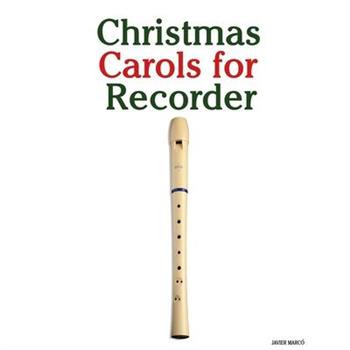
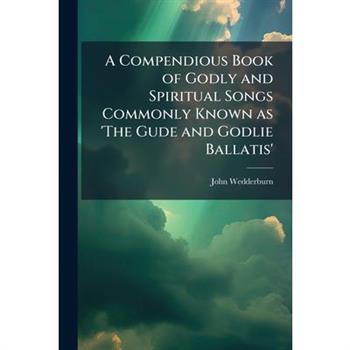
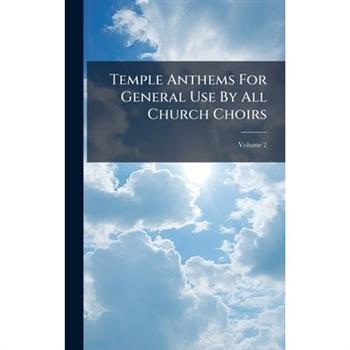
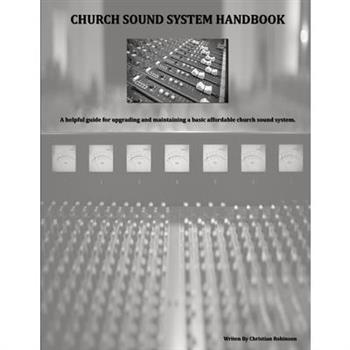
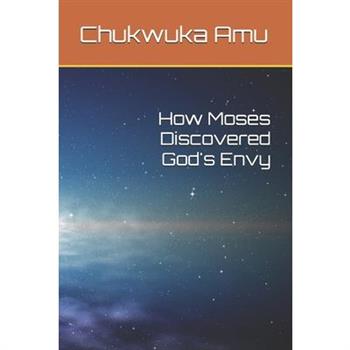
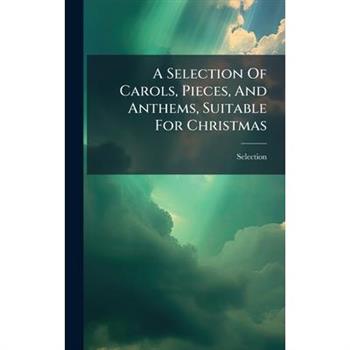
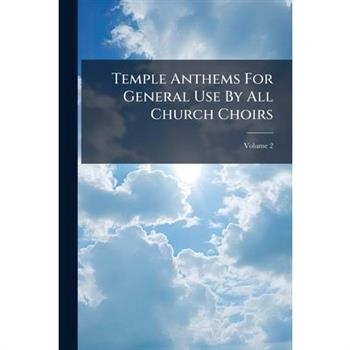
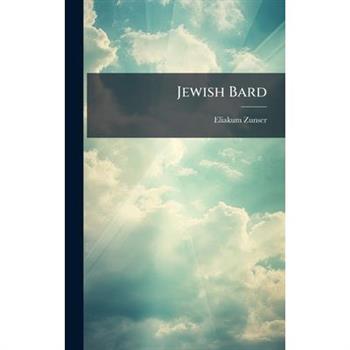
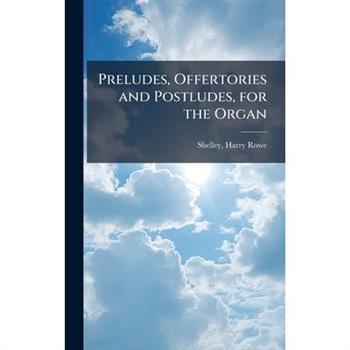
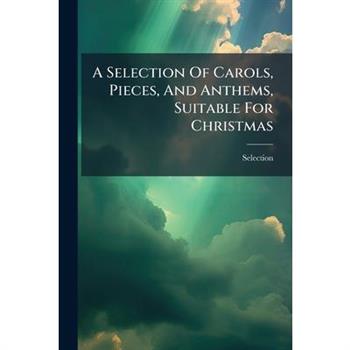
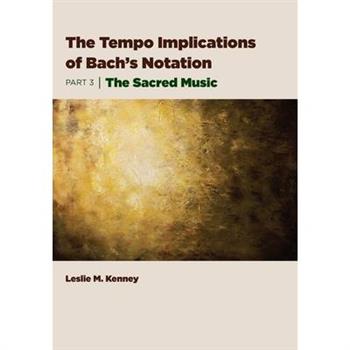
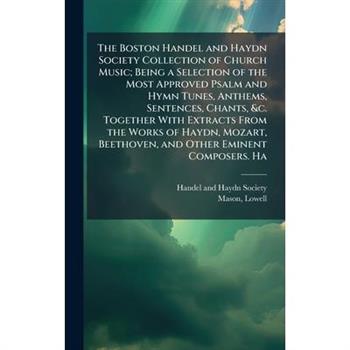
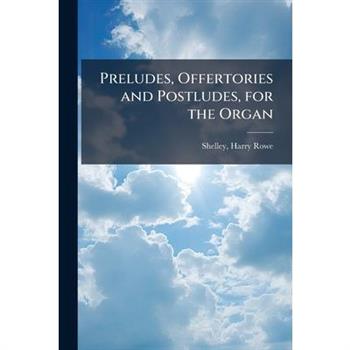
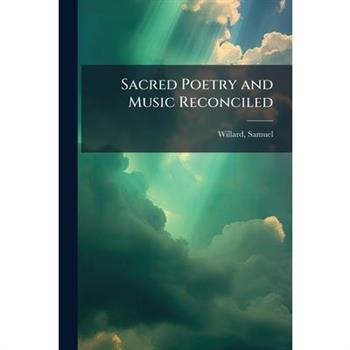
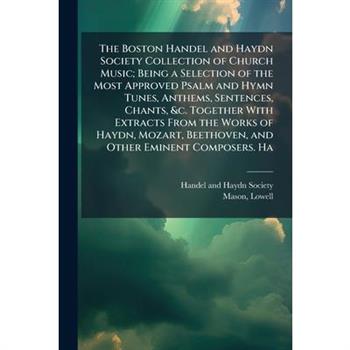
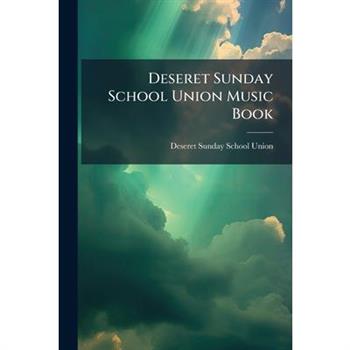
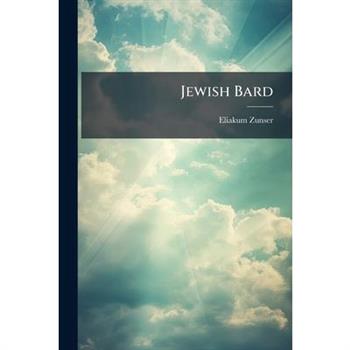
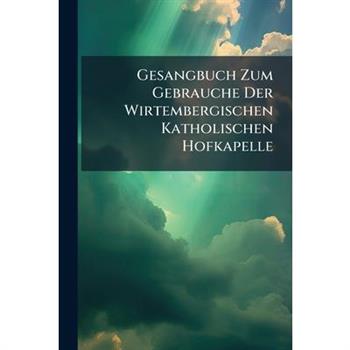
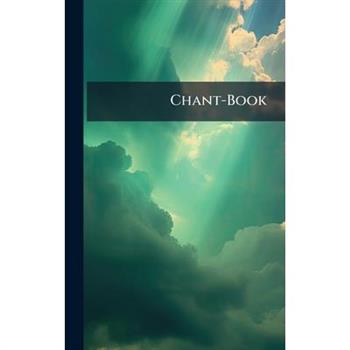
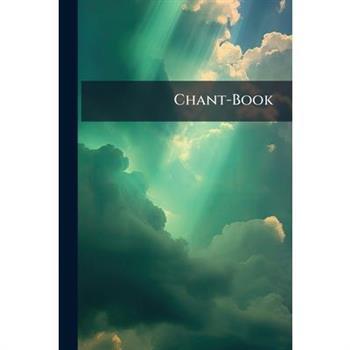
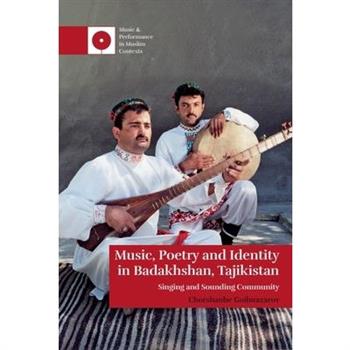
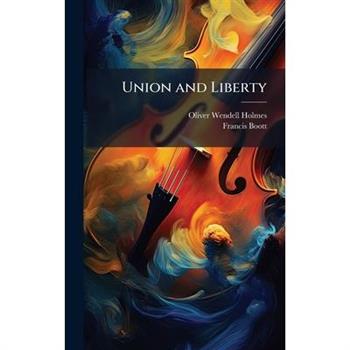
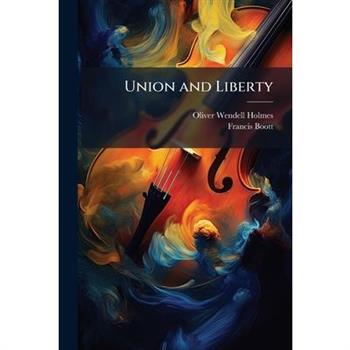
![The Sacred Lyrics of the Liturgy, As Ordered to Be Used With Music, in the Public Worship of the Anglican Church [Ed. by H. Slight] The Sacred Lyrics of the Liturgy, As Ordered to Be Used With Music, in the Public Worship of the Anglican Church [Ed. by H. Slight]](https://cdn.kingstone.com.tw/english/images/product/8038/9781023858038m.jpg?Q=9b1c9)
![The Sacred Lyrics of the Liturgy, As Ordered to Be Used With Music, in the Public Worship of the Anglican Church [Ed. by H. Slight] The Sacred Lyrics of the Liturgy, As Ordered to Be Used With Music, in the Public Worship of the Anglican Church [Ed. by H. Slight]](https://cdn.kingstone.com.tw/english/images/product/5129/9781023855129m.jpg?Q=bb05b)
